Succulent plants are some of the hottest plants on the market right now. And for good reason!
Whether you’re looking to add some color to your garden or you’re looking for a plant that won’t need a lot of maintenance, succulents are a great option. And, with such a wide variety to choose from, it’s easy to find one (or a few) that will fit your needs.
If you’re looking for succulent plants that will grow quickly, you’ve come to the right place. In this article, we will share 13 of the fastest-growing succulent plants, as well as some tips on how to grow them even faster.
So, without further ado, let’s get started!
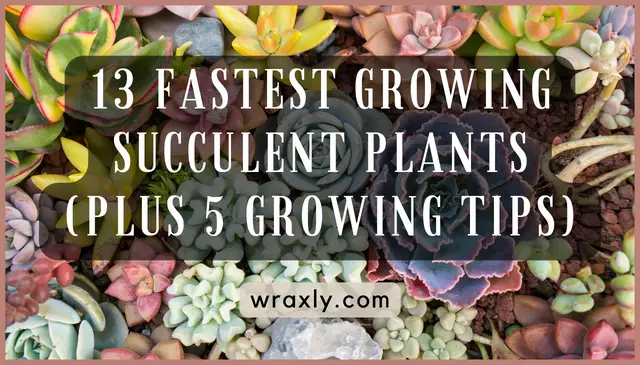
Fastest Growing Succulents That Propagate Easily from Cuttings
To make it easier for you to increase your collection of growing succulents, we’ve divided this list of fastest-growing succulent plants into three categories.
Let’s start with succulents that you can grow from cuttings:
1. Crassula
Crassula is a popular genus of succulent plants among new gardeners because of its ability to grow quickly—it can reach heights of up to 18 inches within a year!
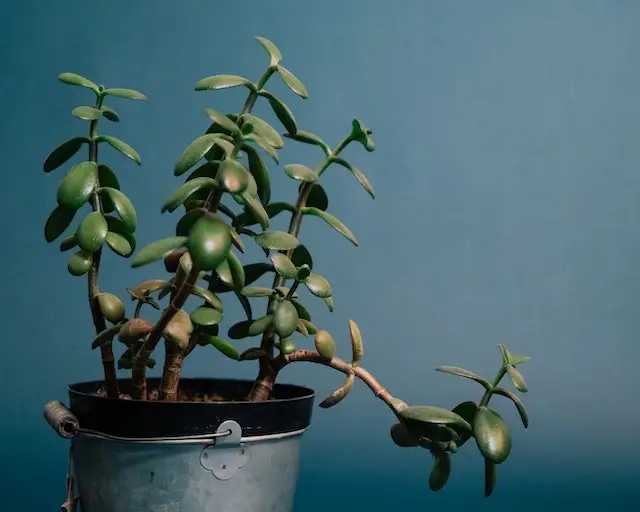
It has tiny leaves that make it look like young plants when they first emerge in the springtime; however, once they get larger, they start looking more like a mini tree. The plants produce small yellow flowers with orange anthers that may be used as cut flowers or dried for use as decorative decorations around the home.
Crassula is also a fast-growing succulent that thrives in low-light conditions and prefers well-drained soil. They originate from Madagascar, India, Indonesia, Malaysia, and New Zealand.
2. Kalanchoe
Kalanchoe takes just three months to grow from seed to mature plant, and it’s also one of the most popular types of succulent plants.
This succulent plant is native to Madagascar and can grow in nearly any climate. It’s a great choice for beginners, as it’s easy to grow, doesn’t require much care, and can bloom multiple times per year! If you have a sunny window or garden spot where you want to grow a plant quickly and easily, then Kalanchoe is definitely an option for you!
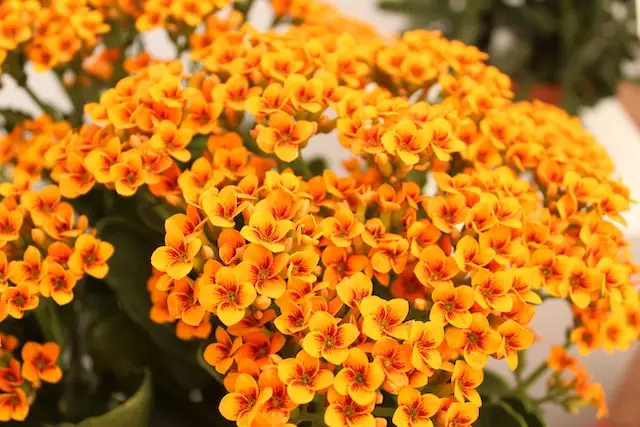
Kalanchoe can grow in a wide range of colors, including red, orange, yellow, green, and white. It’s known for its beautiful leaves and stems, which are often used in bonsai practices.
Based on what we’ve seen, the fatter, fleshier the leaf, the more rapidly and readily the succulent propagates. So, if you’re interested in leaf propagation and want to make it as simple as possible, consider choosing succulent species with rather thick leaves.
Cutting propagation is a bit difficult for succulents like aeoniums that produce offshoots without their own roots. However, you still have a good chance of propagating them since they have so many pups.
You may also be interested in… Growing plants from cuttings
Fastest Growing Succulent Plants That Grow from Seeds
The easiest method to create new succulents is probably to split or clip offshoots or pups, which are essentially little babies that sprout from the mother plant.
Growing succulents of the following varieties are ideal for this form of collection expansion since they often sprout offshoots with ease:
3. Aeonium
Aeonium has a thick, fleshy stem and a rosette of fleshy leaves that can grow up to 8 inches long. They come in a variety of colors, including green, yellow, pink, and red.
Aeoniums tolerate hot temperatures and arid conditions, making them perfect for sunny yards and other areas that might not be suitable for other plants. They also don’t need much water, so they’re great for gardeners who are trying to save water!
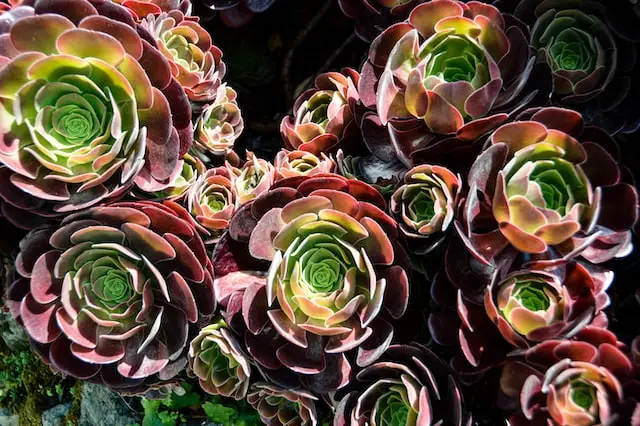
Aeoniums are native to the Canary Islands and the western coast of Africa, where they grow on sandy beaches or rocky cliffs. The plants produce small, greenish-white flowers with purple or yellow anthers. Aeoniums also make good houseplants!
4. Aloe
Aloe is also a fast-growing succulent plant that grows in a similar way as Aeonium. Like Aeonium, Aloe has thick fleshy stems and fleshy leaves that can grow up to 8 inches long.
Unlike Aeonium, however, the leaves of Aloe don’t have sharp edges—instead, they are more rounded or even pencil-shaped. Aloes tolerate hot temperatures and dry conditions better than aeoniums do because they produce more oxygen through photosynthesis when exposed to sunlight. This makes them perfect for sunny areas like patios or balconies where you want some greenery but don’t want anything too delicate yet!
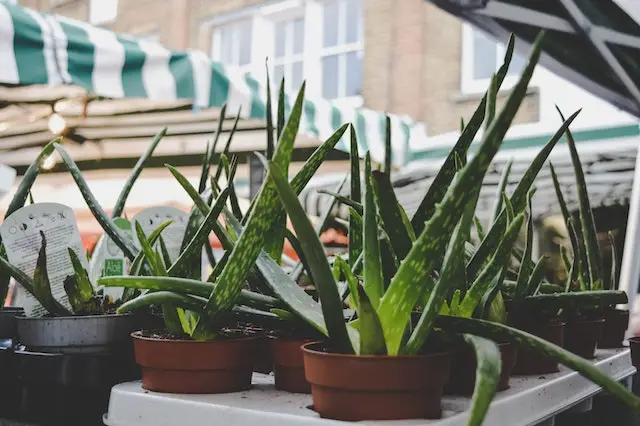
There are over 500 species of Aloe, but only a few are commonly grown as houseplants. Aloe vera is the most popular, but other popular varieties include Aloe arborescent and Aloe marlothii. Aloe plants can grow up to 2 feet tall and wide. (See: Should I cut the brown tips off my Aloe Plant?)
5. Sedum
You may be familiar with Sedum if you’ve ever seen one of those “instant succulents” at your local grocery store. Sedum is a genus of flowering plants that includes many different species with variegated foliage and colorful flowers.
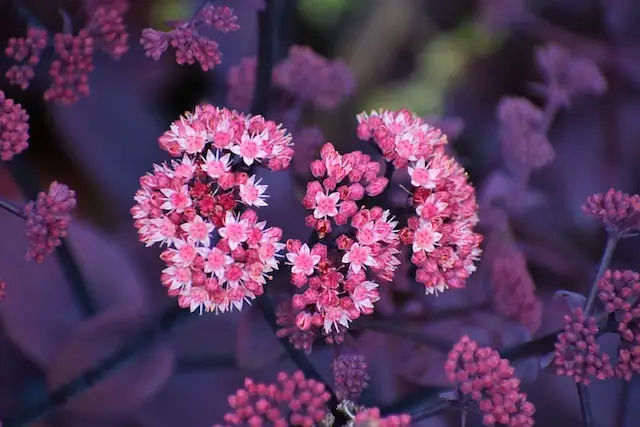
Sedum plants come in many different colors like pink, purple and blue; however, most of them are green or gray in coloration, with spikes coming out of their tops called “peduncles.” They are known for being drought resistant because they don’t need much water at all!
Sedum fits into the category of succulents that can be grown from seed in just two months. Sedum blooms in spring or summer when temperatures are warm enough for it to grow well outdoors.
6. Haworthia
Haworthia is also on this list as one of the fastest-growing succulent plants. Haworthia is sometimes called the “mother plant” because it produces female flowers first, then male flowers, then more females. The plants can grow up to 6 inches tall and wide!
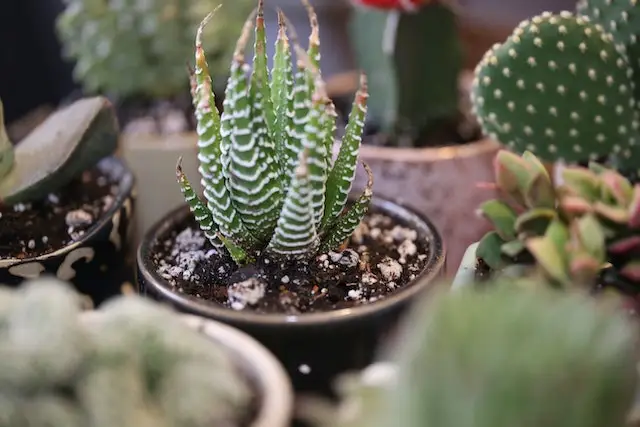
This succulent plant is native to South Africa and can be found growing wild in a variety of climates. However, if you want one that will grow indoors, then this may be your best bet!
This plant requires little maintenance and only needs to be watered twice a month to keep it healthy. It’s also quite easy to propagate once you’ve collected some seeds from the wild or bought some online!
7. Graptopetalum
The Graptopetalum is one of the easiest succulents to grow! It can be grown indoors or outdoors, so you have a lot of flexibility. These plants are perfect for those who want to add a splash of color to their succulent collection.
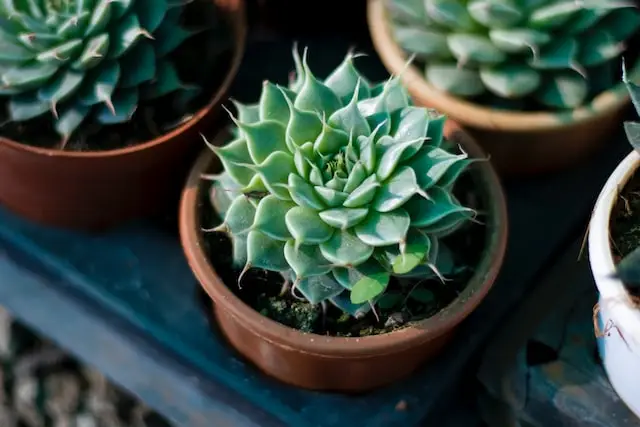
If you’re going to use it indoors, it’s best to choose a spray- or mister-type plant pot that allows you to mist the leaves without losing water. It will quickly cover the ground with large leaves. It’s also known for its bright green color, which makes it a great choice for outdoor gardens.
It can grow up to 4 feet tall and wide and 12 feet with support. The flowers are not as showy as other succulents, but they still come in bright colors such as purple and red.
If you want to grow your succulent collection in this method (from seeds), the best way to do this is to visit a nursery and compare the plants with the same-size pots. The more offshoots a plant already has on it, the better.
For example, if you compare a pot of Haworthia with a pot of Echeveria that is 12 cm in diameter, the Haworthia may have 20 offshoots, whereas the Echeveria is likely to have only two or three.
This is also a great way to choose which varieties of succulents will propagate the most and provide more offshoots.
Other Fastest Growing Succulents That Can Expand into a Large Specimen
These varieties of succulents are perfect if you just need a few plants but want them to grow into large specimens quickly:
8. Echeveria
These plants are known for their bright red flowers and long, arching shape that makes them look like a living cactus. They’re great for pots or hanging baskets because they don’t require much water and will thrive in any sunny spot.
Just keep in mind that these plants don’t like cold temperatures, so make sure they stay warm! You can also use cacti soil (either dried or fresh) to help them thrive.
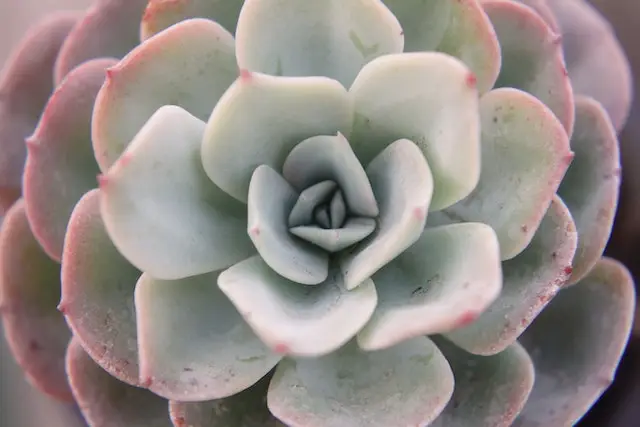
Echeveria is native to Mexico. It can grow up to 12 inches tall and wide, making it an excellent choice for landscaping or even indoors!
9. Sempervivum
If you want something with a more tender feel, try Sempervivum. These plants grow more slowly than others on this list and are great for areas where you need more time to get them established before they start growing fast.
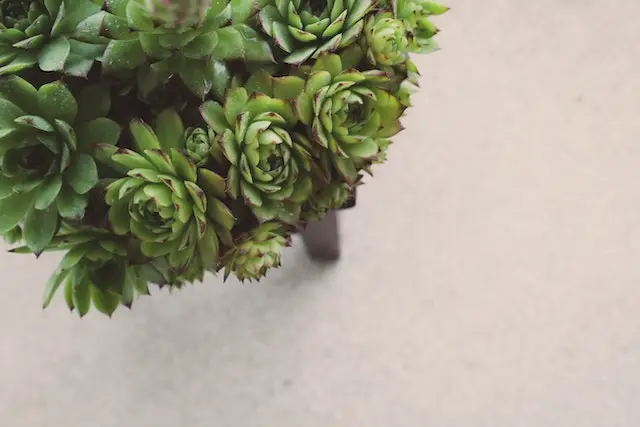
They only grow up to 2 inches high at first but will continue to stretch as they mature into their final form.
Sempervivum is native to the Mediterranean region. They grow in a rosette shape and come in a variety of colors, including green, pink, red, and purple.
10. Stonecrop
The stonecrop family includes a variety of succulents that are commonly called “pebbles.” These plants are easy to grow and often have interesting colorful leaves.
Stonecrop is the most popular succulent plant for the home landscape. It grows in a wide range of colors, from light green to pink, red, and purple tones. Stonecrop has long, narrow leaves that are shaped like stones or pebbles.
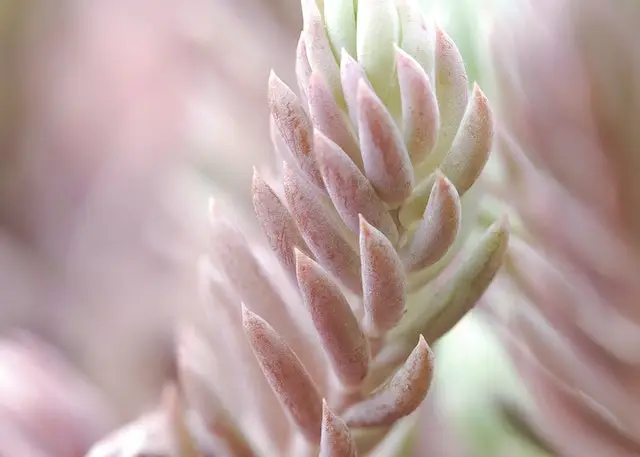
The leaves may be smooth or rough; they’re often covered in powder. The flowers come in a wide array of colors as well—from white to orange-red to yellow.
11. Lithops
Lithops are an easy-to-grow succulent plant that grows in a variety of colors and shapes. They’re popular houseplants. It’s also known as “petrified wood” because its leaves look like petrified wood at first glance.
Lithops are drought tolerant and have low maintenance requirements, which makes them a great choice for anyone who doesn’t have time or money to spend on gardening.
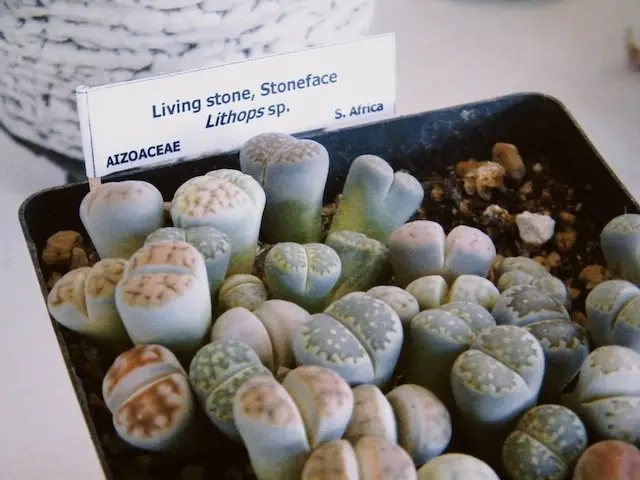
Lithops are an ancient plant that has been around since the time of dinosaurs! They have the ability to store a large amount of water inside themselves, so they don’t need much water at all—just enough to keep them happy. Plus, their flowers look like little stones!
12. Opuntia
Opuntia ficus-indica is a succulent plant that grows in the desert regions of Mexico and South America. It’s native to Mexico, which makes it one of the fastest-growing succulents on Earth.
The plant can grow up to 7 inches per day, which is impressive considering that it only needs to be watered once every ten days. The cactus has soft, green leaves on top and a red-orange spiny trunk. It grows best in full sun and does well in hot temperatures.
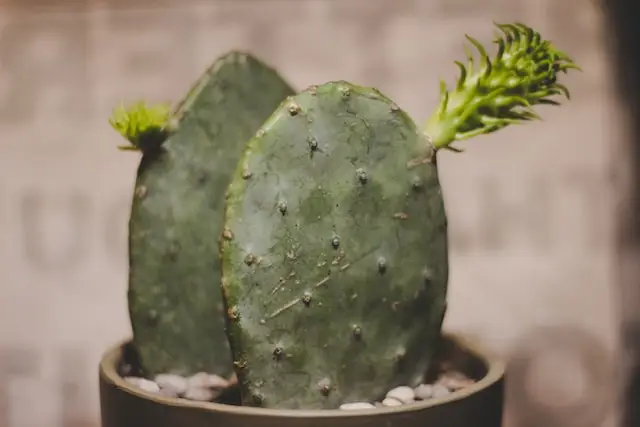
The most popular succulent plants are the cacti or “prickly pear” types. These are great for low-maintenance gardens and make small spaces feel more open, so they’re especially popular with urban gardeners.
13. Portulacaria
The Portulacaria Afra bush is a shrub with small, fleshy leaves that are often purple or green. It grows well in temperatures between 50 and 80 degrees Fahrenheit and requires little water or fertilizer.
You can find this plant at nurseries and garden centers, but it’s also easy enough to grow yourself! It’s good for picking during the summer months because it’s drought resistant and resistant to pests like ants.
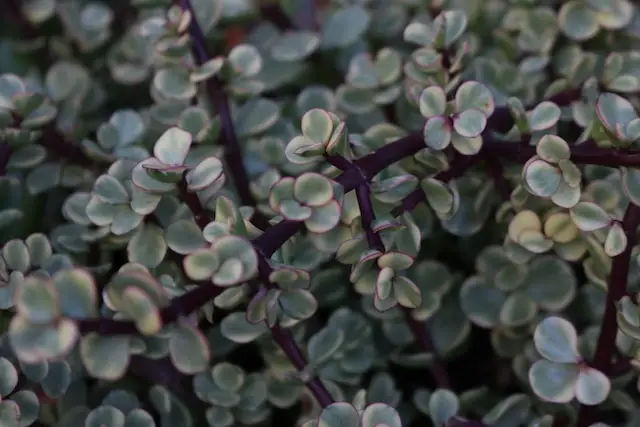
Portulacaria is also known as the Brazilian fig tree because its leaves look a bit like figs. If your space is limited and you’re looking for something that won’t take up much space or require much maintenance, this might be a good option for you!
Many large-growing succulents (if they have stems) also make excellent plants for cuttings. The majority may also be propagated by leaves pretty easily.
That’s why, even if you want to have more variety in size, we believe this to be the category that will build your collection the quickest.
Succulent Seeds and Starter Kits
| Image | Title | Prime | Buy |
|---|---|---|---|
 | 500pcs Mix Rare Succulent Seeds for Planting, DIY Bonsai Ornamental Plant Hardy Perennial | PrimeEligible | Check My Price on Amazon |
 | Unknown Kucus 200pcsbag Aloe polyphylla Pillans Seed Rare Spiral Aloe Flower Succulent Plants for Home Garden Potted Pants | Prime | Check My Price on Amazon |
 | Big Pack - (1,000+) Hen & Chicks Cactus Mixed Seeds - Sempervivum - Hardy Perennial in Zones 5-9 - by MySeeds.Co (Big Pack - Hen & Chicks) | PrimeEligible | Check My Price on Amazon |
Top | Cactus Succulent Seed Starter Kit - Indoor Garden Grow Kits, Seeds for Planting Mini Cactus Succulent Plants, Plant Markers, Soil, Pots, Wood Box - Gardening Gifts, Terrarium, Cacti Succulents Decor | PrimeEligible | Check My Price on Amazon |
 | Hapinest Succulent and Cactus Seed Starter Growing Kit Gardening Plant Gifts for Men Women Teens and Kids | PrimeEligible | Check My Price on Amazon |
 | Sensual Succulents 15 Assorted Succulent Cuttings | Prime | Check My Price on Amazon |
 | SeedsUP - 25+ Cactus Rare Succulents Cacti - Flower Mix | PrimeEligible | Check My Price on Amazon |
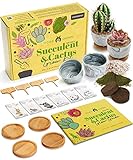 | Deluxe Succulent & Cactus Seed Grow Kit - Complete Indoor Cactus & Succulent Kit w/Cactus Seeds, Potting Soil, Ceramic Succulent Pots, Water Drip Trays, Grow Guide | PrimeEligible | Check My Price on Amazon |
 | Succulent Starter Kit - All You Need to Grow Succulents from Seed - DIY Gift Kit - Wooden Planter - Plant Agaves, Aloes, Beaucarnea, Dasylirion, Hesperaloe, Nolina, Yucca, and More | PrimeEligible | Check My Price on Amazon |
5 Succulent Growing Tips to Grow Them Even Faster
If you’re anything like me, you love succulents. They’re low maintenance, they’re drought tolerant, they look great, and they’re perfect for people who don’t have a lot of time (or space) to take care of plants.
Even if you’re the most neglectful plant parent in the world, you can still make your succulents grow faster with a few simple tips.
1. Start with High-Quality Succulent Cuttings or Plants
This may seem obvious, but it’s worth repeating: if you want your succulents to grow quickly and healthily, you need to start with good-quality cuttings or plants. You can find high-quality succulents at your local nursery or online.
2. Plant Them in Well-Draining Soil
Succulents don’t like to sit in wet soil, so it’s essential to ensure that the soil you’re using drains well. You can mix your succulent soil by combining equal parts potting soil, perlite, and sand. Or you can buy a premade succulent soil mix at your local nursery or online.
3. Give Them Plenty of Sunlight.
Succulents need sunlight to grow, so give them a bright spot to call home. If you live in a particularly sunny climate, you may need to provide some shade for your succulents during the hottest hours of the day.
4. Water Them When the Soil Is Dry
As we stated previously, succulents don’t like to sit in wet soil, so only water them when the soil is dry. If you’re unsure whether the soil is dry, stick your finger in it – if it’s dry up to your first knuckle, it’s time to water.
5. Fertilize Them Once a Month
Succulents need nutrients to grow, so fertilize them once a month with a succulent-specific fertilizer. You can find succulent fertilizer at your local nursery or online.
With these simple tips, you can make your succulents grow faster than you ever thought possible!
Final Words
If you’re looking for the fastest-growing succulent plants to add to your collection, look no further than these top picks.
To encourage fast growth in your succulents, water them regularly and provide them with plenty of sunlight. If you live in an area with hot summers, you may also want to provide them with some shade during the midday hours. With a little care and attention, you can have these plants growing and thriving in no time.
Thanks for reading!
FAQs
While all succulents have different growth rates, some are particularly fast-growing. In general, succulents that are native to arid regions tend to grow faster than those from humid regions.
Additionally, succulents that have a higher water content will grow faster than those with lower water content.
It depends on the type of succulent, the growing conditions, and the amount of care the plant receives, but most succulents grow relatively quickly from cuttings. Some succulents can even grow an inch or two per week under ideal conditions.
Yes, succulent cuttings can be planted immediately. However, the cuttings should be left to callous over for a few days to a week before being planted.
It can take succulents up to six weeks to germinate from seed. However, some species can take much longer. Once they have germinated, succulents generally grow relatively quickly. They should start to form new roots and leaves in 21-28 days.

Darrell has a passion for gardening that he inherited from his father. Go here to read more about the influence his father played in his love for gardening. If you want to send Darrell a quick message, then visit his contact page here.

![How to Water Indoor Plants [Plant Care 101]](https://wraxly.com/wp-content/uploads/2021/03/How-to-Water-Indoor-Plants-Plant-Care-101-1200-1024x576.webp)

![Growing Plants from Cuttings [A Simple Guide]](https://wraxly.com/wp-content/uploads/2021/03/Growing-Plants-from-Cuttings-A-Simple-Guide-1200-1024x576.webp)